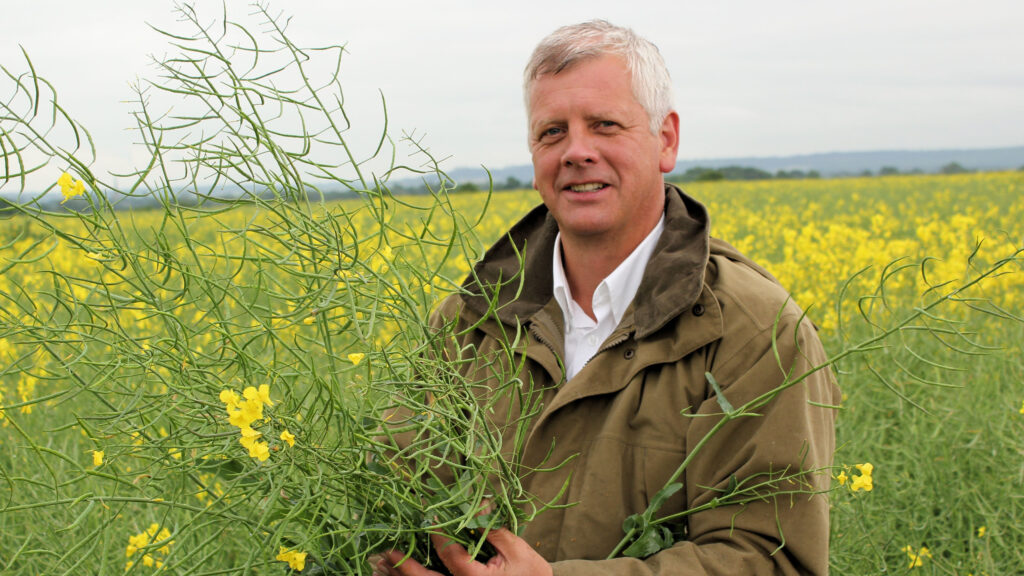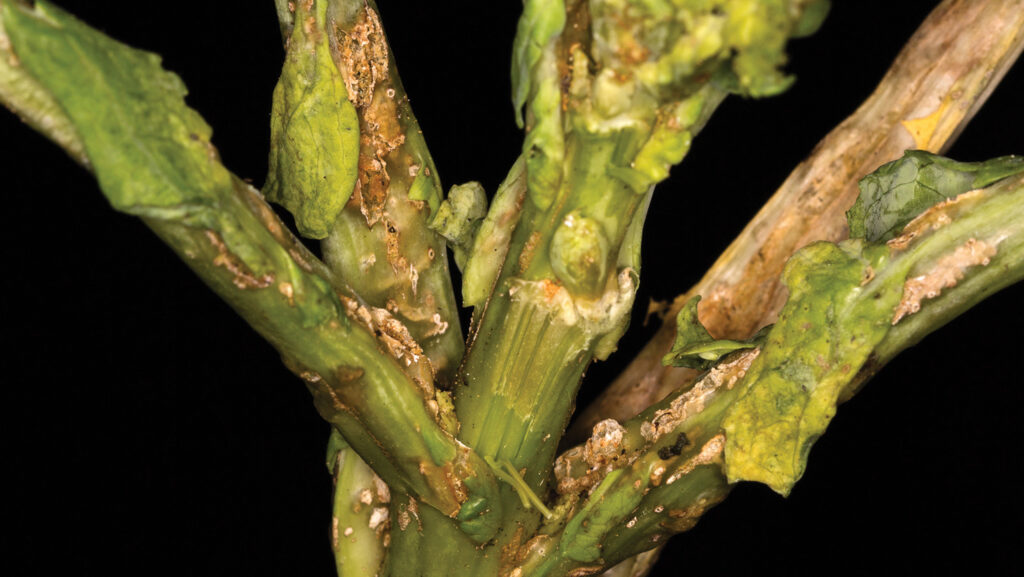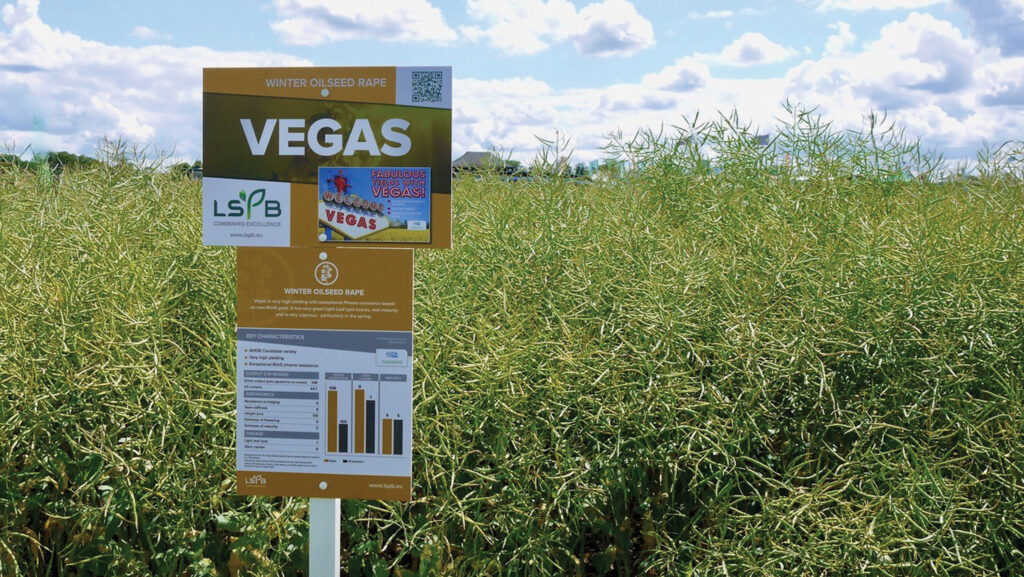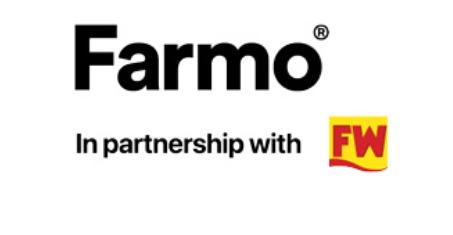Why high spring biomass is a key weapon against flea beetle
 David Leaper © Agrii
David Leaper © Agrii Oilseed rape growers choosing the right variety and opting to drill the crop slightly later this year could face far fewer problems as the crop develops, and benefit from higher yields, latest research from Agrii suggests.
While establishment and avoiding damage caused by adult cabbage stem flea beetle (CSFB) in the autumn have been top priority in recent years, latest trials show this comes at a significant cost to future growth and yields, says the company’s seed technical specialist David Leaper.
“We’re learning there are a number of ways to mitigate risk of adult damage in the autumn, but nothing we can do to reduce the effects of larvae in the spring other than choose the right variety in the first place and drill it at the optimum time”.
See also: Farmer sets OSR world record in the Lincolnshire Wolds
In terms of beating flea beetle, that probably means waiting for September, which has its own problems, but drilling five to six weeks earlier than this optimum, simply means we are storing up all sorts of problems for the future.
He says drilling early limits the ability to break the flea beetle cycle and increases the risk of larval damage the following spring.

© Blackthorn Arable
“Plus, you’re opening the door to greater disease risk, particularly light leaf spot and clubroot, alongside potential lodging problems and reduced opportunities for controlling blackgrass.”
“It’s understandable why some growers have chosen to drill in late July and early August this year, after the recent rain following the prolonged period of drought.
“The problems of the last few autumns are also foremost in people’s minds, but we really need to look at the implications of drilling time across the whole growing cycle.”
Flea beetle still widespread
The problem is compounded by there still being a lot of CSFB about despite the extended rotations now being used, he points out.
“Agrii took part in a CSFB survey in February this year involving 177 crops sampled, and while the overall numbers seen across the country are undoubtedly lower than in recent years, the pest is still everywhere. We are far from out of the woods in this respect.
“Of the 50 crops we looked at in detail, only three had no larvae present and the average score was three larvae per plant, which is still a sizeable problem.”
Recent Agrii trials have therefore focused on how plants can withstand the damage caused by CSFB both in the spring and the autumn, David explains.
“Historically we have always looked to hybrids to provide vigorous growth in the autumn, because as well as the CSFB issue, we have always had the weather against us plus problems with other pests including pigeons and slugs.”
Spring vigour holds key
This thinking was that very vigorous varieties such as Extrovert, Expower and Campus really took off. But that is really only part of the picture, David says.
“Recent Agrii trials have increasingly looked at vigour as a two-stage process, with the key periods being mid- to late December and also late February.
“Over the past five years we have seen significant differences in vigour across OSR varieties, particularly in the spring, with some varieties able to build biomass far more quickly than others.
“Furthermore, there is a strong correlation between spring biomass and the physical damage caused by larvae.”

© LSPB
In trials carried out in spring 2025 with about 30 varieties tested, Maverick, Kanzzas, Hanneli and Vegas built biomass the quickest and were also the ones that had the least incidence of larval damage subsequently, he points out.
“These results align with those from five years of trials where we have seen a strong correlation between early spring growth, biomass production and reduced physical damage caused by larvae.
“These varieties then go on to deliver the highest yields by some margin, so there is a clear relationship between spring biomass and final gross margin.”
Companion cropping has vital role to play
Agrii has also been trialling a range of companion crops for use with oilseed rape to assess their ability to reduce the damage done by CSFB, with some clear leaders emerging.
Buckwheat, when established well, reduced the damage caused by adult cabbage stem flea beetle during the establishment phase and continued to do so through the autumn until the first cold nights, when the buckwheat died back, Agrii’s David Leaper explains.
“This extended period of protection reduced the number of flea beetle eggs laid on plants and, importantly, resulted in lower larvae numbers per plant in the spring.
“Plots that had a buckwheat companion crop also appeared to be more vigorous and with an even growth habit in the spring, probably as a result of the reduced larval damage.”
When it comes to the best buckwheat option, Fagopyrum tataricum (Lifago) was found to be more effective than Fagopyrum esculentumn, although both types worked well.
Other companion crop options were seen to be of benefit too, he adds.

